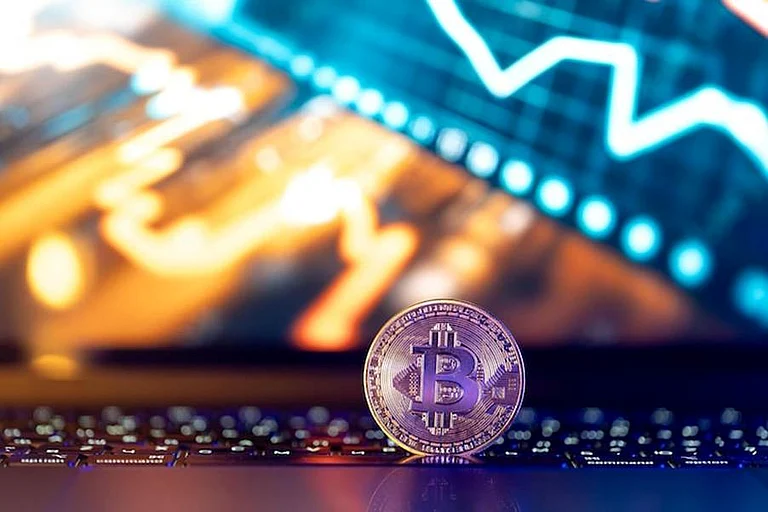Over the past few years, decentralized finance, or more popularly referred to as DeFi, has been a paradigm-shifting substitute for the conventional financial establishment. Founded on blockchain technology, DeFi dispenses with middlemen and enables customers to directly tap into financial services. Conventional finance, or TradFi, has traditionally been the cornerstone of the global economy, with regulated bank services, credit networks, investment platforms, and institutional trust. As DeFi progresses, one core question remains: Can these two models coexist or will they replace each other? Instead of replacing each other, we might be at a stage where DeFi and TradFi overlap and merge into a hybrid model with a mix of innovation and stability.
Knowing the Core Differences
In order to fully comprehend the potential for coexistence, one must comprehend structurally, functionally, and philosophically the differences between DeFi and traditional finance. Traditional financial institutions work through centralized systems governed by top-down institutions like central banks, financial regulators, and judiciary systems. They were built on a tested mechanism of trust, regulatory duty and intermediary services.
It is in sharp contrast, though, because DeFi sites employ smart contracts to do all the transaction processing on blockchain networks devoid of interference from central authorities. All transactions are transparent, automatic, and accessible to anyone with internet access and a digital wallet. Where this decentralization offers efficiency and democratization, it raises issues like no interference from regulators, technical attacks, and market fluctuations.
The Attraction and Constraints of DeFi
DeFi growth has been driven by its potential for openness, self-governance, and greater returns. Users are attracted by platforms offering decentralized lending, borrowing, trading, and staking without the intermediary layers of legacy banks. The peer-to-peer aspect of DeFi is attractive for those interested in privacy, asset control, and financial inclusivity—particularly in areas with limited banking infrastructure.
But DeFi also has its restrictions. The same lack of intermediaries that makes it appealing generates security and accountability issues. Smart contract bugs, rug pulls, and market manipulation are typical hazards. Furthermore, the learning curve for DeFi users can be high, and the absence of customer support or conventional means of resolving conflicts puts users at risk. Regulatory ambiguities also make integrating DeFi into the main financial stream difficult.
Evolution and Challenges of Traditional Finance
Traditional finance, strong and regulated as it is, will tend to be slow, elitist, and inefficient. Bank charges, cumbersome procedures, and outdated technology may discourage technologically hospitable customers and entrepreneurs. Yet, its natural strength is in risk management, institutionality, consumer protection, and affordability at scale. Regulated systems provide some security and determinism that DeFi is yet to reach.
Embracing change, however, most legacy institutions are at least seeking ways to embrace. Central banks are exploring digital money, and banking giants are making investments in blockchain or issuing tokenized assets. These inform us that there is growing interest in TradFi to take on decentralized innovations, albeit in a conservative way.
Signs of Convergence: A Hybrid Future
Rather than competing with one another, DeFi and TradFi could be headed toward convergence. The future might be an interconnected, hybridized financial system based on the best of both worlds. One trend that is most certainly in the air is the advent of "CeDeFi" or Centralized-Decentralized Finance—a system by which centralized players apply decentralized technology to provide superior services. Binance and Coinbase, for example, offer a platform whereby customers can partake in DeFi products through easy-to-use, regulated interfaces.
Likewise, certain actions are forcing DeFi protocols to implement Know Your Customer (KYC) and Anti-Money Laundering (AML) functionalities to comply with regulations. Banks, on the other hand, are testing smart contracts for cross-border settlements, tokenized bonds, and blockchain lending. This increasing intersection indicates a symbiotic awareness: DeFi requires regulatory endorsement to expand, while TradFi requires technology to stay relevant.
Regulatory Cooperation: The Bridge Between Two Worlds actions
Among the forces propelling coexistence is regulation—not as an obstacle but as a bridge. Regulators across the globe are gradually shifting toward accepting DeFi as a constituent of the entire financial system. Regulations are being written to help ensure that compliance levels are achieved by DeFi platforms without undermining decentralization. Countries such as Switzerland and Singapore are front-runners in creating regulatory sandboxes where DeFi innovations can be experimented with in contained environments.
This partnership can facilitate responsible innovation and establish industry norms for accountability, transparency, and security. As regulators and developers are now on the same page, the groundwork for a hybrid financial system becomes even stronger.
The Role of Institutions and Developers
Success in DeFi-TriFi integration will depend on institutions and developers' actions. Banks and other legacy financial institutions have to be willing to re-model their models to add decentralized tools. That could be providing blockchain-based saving products, employing DeFi protocols for liquidity management, or applying decentralized identity verification.
Conversely, DeFi engineers have to put emphasis on user-friendly interfaces, security elements, and legacy system integration. Establishing trust via audits, open governance, and learning will be fundamental. The more accessible and secure DeFi gets, the less painful it will be for mainstream users and institutions to become part of it.
Education and Public Awareness
For any hybrid system to thrive, users should be aware of how to use both DeFi and TradFi systems. Financial literacy is the platform for building confidence and participation. Governments, institutions, and schools can help by offering accessible publications that define blockchain, tokens, wallets, and smart contracts. Similarly, public information campaigns can both display the worthiness and risk of dealing with decentralized networks.
Future Prospects: Collaboration Rather Than Competition
DeFi and traditional finance are not necessarily opposing forces. They are, in fact, intertwining to the extent that their objectives are no longer mutually exclusive. The future of finance cannot be a zero-sum game. Rather, it will be defined by cooperation, creativity, and mutual accommodation.
A hybrid financial system definition can draw upon the automation and openness of DeFi and the stability and trust of TradFi. This combination can bring us the next era of financial transformation—one that is more robust, more responsive to a changing world, and more inclusive.
Briefly put, DeFi and traditional finance are not mutually exclusive, but rather, they can learn from and complement each other. As technology and regulation keep improving, decentralized and centralized systems will become confused with one another, leading to the dawn of a hybrid future that will benefit users, institutions, and economies as well.

























